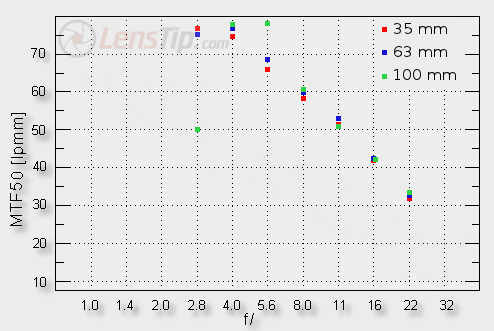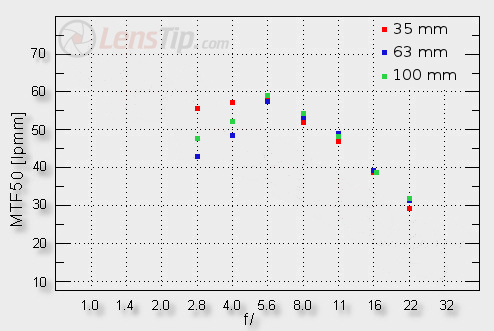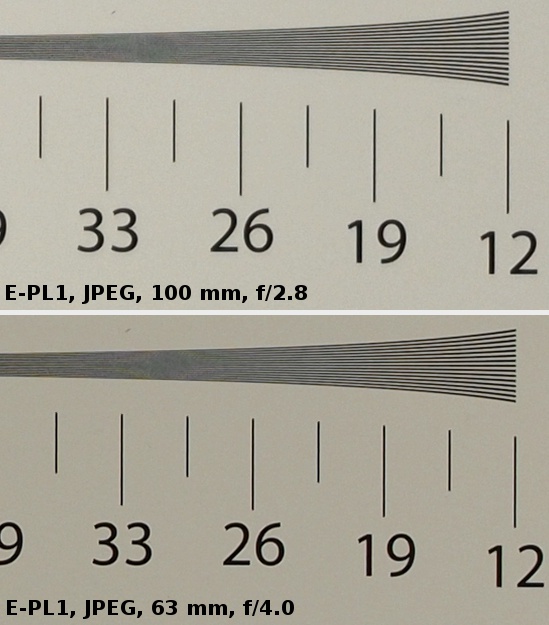Panasonic G X VARIO 35-100 mm f/2.8 P.O.I.S.
4. Image resolution
Let’s check how the tested lens compares here. The graph below presents its performance in the frame centre.

Please Support UsIf you enjoy our reviews and articles, and you want us to continue our work please, support our website by donating through PayPal. The funds are going to be used for paying our editorial team, renting servers, and equipping our testing studio; only that way we will be able to continue providing you interesting content for free. |
- - - - - - - - - - - - - - - - - - - - - - - - - - - - - - - - - - - - - - - - - - - - - - - -
Similarly as in the case of the 12-35 mm model you can notice that the Panasonic 35-100 mm can compete on an equal footing with the best “pancakes” and also it is almost as good as the best system fixed focus lenses. The only crisis you can find in its whole performance concerns the maximum relative aperture and the maximum focal length where the MTFs reach 50 lpmm. Still it is a level which allows you to take fully useful photos.
A big discrepancy between different resolution results by f/5.6 is an interesting phenomenon. At the maximum relative aperture the tested lens gets to a sensational level of almost 79 lpmm, at shorter focal lengths it fares significantly worse. At 100 mm the resolution value is so good that it seems only diffraction limits its height, with all other aberrations reduced to the absolute minimum. For a change at the shorter end the off-axis aberrations can’t be eliminated so fast so they still influence the image quality. We think the constructors could tried to reach a compromise here – the main aim was to ensure the highest image quality only by f/2.8 and f/4.0 which are used the most often in the case of such a lens type.
Let’s check the performance of the Panasonic 35-100 mm on the edge of the frame. An appropriate graph is presented below.

The situation on the edge of the frame looks good - it is perhaps the most appropriate word because we cannot call it either bad or outstanding. This time the weakest result is observed at 63 mm where, at the maximum relative aperture, we get MTFs near 42 lpmm. It is practically our decency level limit and some people might consider such images as not sharp. Fortunately for the rest of focal lengths the performance is better. The tested lens reaches the peak of its possibilities by f/5.6 where, at all focal lengths, it keeps the results on a very good level of almost 60 lpmm. You can of course always start to carp that this level could have been a tad higher. On the other hand, though, higher results had only such outstanding lenses as the Olympus1.8/45 or the Olympus 1.8/75 – which are not only ‘primes’ but also they are noticeably faster so there is more room to fight aberrations of different kind.
Below you can find crops of our resolution testing chart, taken from JPEG files saved along RAW files which were used for the analysis above.
 |






